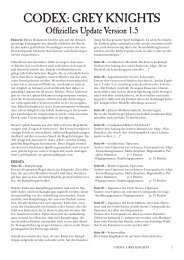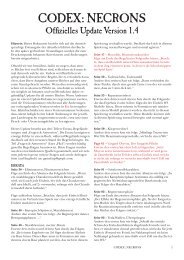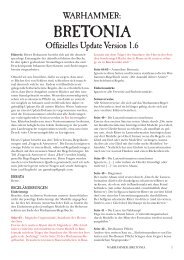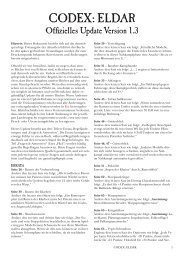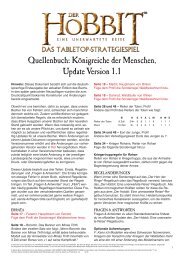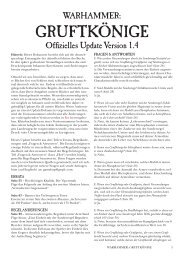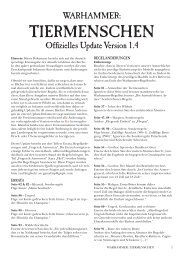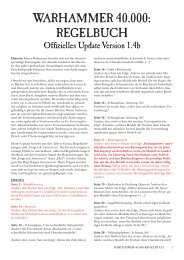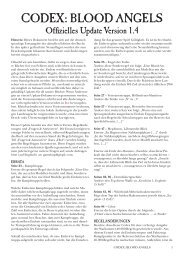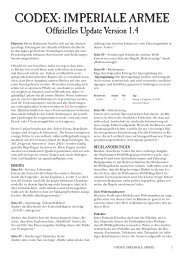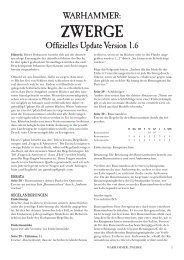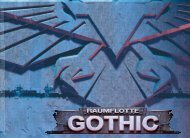Necromunda rulebook - Games Workshop
Necromunda rulebook - Games Workshop
Necromunda rulebook - Games Workshop
Create successful ePaper yourself
Turn your PDF publications into a flip-book with our unique Google optimized e-Paper software.
<strong>Necromunda</strong>n Underhive fighters carry a variety<br />
of weaponry. Individual fighters often have<br />
several different weapons such as grenades,<br />
pistols, knives and guns.<br />
During the shooting phase of your turn each of<br />
your fighters may shoot once with one of his<br />
weapons. So you can either shoot a laspistol, fire<br />
a boltgun, or throw a grenade, for example.<br />
Work through your models one at a time. Pick<br />
which fighter is going to shoot, nominate his<br />
target, work out if he hits his enemy and, if he<br />
does so, any wounds or injuries caused, and<br />
then continue to the next shooter. You can take<br />
shots in any order you wish.<br />
WHO CAN SHOOT<br />
Each model can shoot once in the shooting<br />
phase so long as he can see a target and<br />
assuming he has a suitable weapon and isn’t<br />
fighting in hand-to-hand combat (as described<br />
later). The fighter is always assumed to face in<br />
the direction faced by the model itself, and is<br />
able to see within a 90 degree arc to his front.<br />
You can only shoot at a target within this arc as<br />
shown on the diagram below.<br />
A<br />
90º<br />
In the diagram target A is within the 90º arc of sight and<br />
so can be shot at. Target B cannot be shot at becasue he<br />
is outside the 90º arc of sight.<br />
To shoot at a target a fighter must be able to see<br />
it, and the only way to check this is to stoop over<br />
the tabletop for a model’s eye view. Sometimes it<br />
will be obvious whether a target can be seen, at<br />
other times it will be more difficult as buildings<br />
and girders will be in the way. So long as the<br />
shooter can see at least a part of the target’s<br />
body he can shoot, even if all that can be seen is<br />
SHOOTING<br />
B<br />
13<br />
NECROMUNDA<br />
an arm or leg. If he can see nothing but the tip<br />
of a gun or the end of a sword then he cannot<br />
shoot as he is unable to see the target’s body. If<br />
in doubt, and if you’ve checked the shot from<br />
both the firer’s and the target’s view and still<br />
can’t decide, then roll a dice – on a 1, 2 or 3 you<br />
can’t see and on a 4, 5 or 6 you can.<br />
CLOSEST TARGET<br />
You must shoot at the closest enemy as he<br />
represents the most immediate threat and<br />
therefore the most obvious target. However, you<br />
can fire at a more distant target if it is easier to<br />
hit. For example, a closer target may be hard to<br />
hit because it is partly obscured by cover whilst<br />
a more distant target might be in the open and<br />
therefore an easier shot.<br />
B<br />
C<br />
D<br />
A<br />
In this diagram the closet traget is A but he is obscured<br />
by cover and so is more difficult to hit than the more<br />
distant targets B, C and D. In this situation the firer may<br />
shoot at Target B since he is the closer of the more distant<br />
tagerts even though he is further away than target A.



